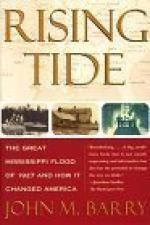
|
| Name: _________________________ | Period: ___________________ |
This test consists of 15 multiple choice questions and 5 short answer questions.
Multiple Choice Questions
1. What was "changing the fabric of society" in the Delta region during WWI?
(a) War, technology and new sexuality.
(b) Women had equal rights.
(c) Blacks were receiving an education.
(d) Slaves were banished.
2. Why wasn't Humphrey's report accepted well in the United States?
(a) The report didn't make any sense.
(b) He didn't publish it in the United States.
(c) The Americans didn't believe him.
(d) The Civil War was happening.
3. River flow is measured in cubic feet per second (cfs). What happens as the cfs increases?
(a) The river's speed increases.
(b) The direction of the river changes.
(c) The river's depth increases.
(d) A flood occurs.
4. When small tunnels are formed beneath the levee a miniature geyser erupts. What is this mini geyser called?
(a) A gas bubble.
(b) A sand boil.
(c) A geyser.
(d) A magma bubble.
5. Why was Eads allowed to proceed with his idea after being opposed unanimously?
(a) He bribed the people.
(b) The President overode the initial decision.
(c) His idea was better than the others.
(d) He offered to pay for the work himself.
6. What helped Leroy Percy lose a lot of his political influence outside of the Delta area?
(a) He enforced the need for slaves.
(b) He wanted to free all slaves.
(c) He advocated for the rights of women.
(d) He helped Vardaman get defeated for a seat in Senate.
7. What did Leroy Percy's speeches advocate?
(a) The right for women to vote.
(b) Better treatment for blacks and education for black children..
(c) Equal rights for women in education and the workforce.
(d) To be able to keep slaves.
8. What year was the jetty project successfully completed?
(a) 1870.
(b) 1879.
(c) 1979.
(d) 1900.
9. Before going to Washington, what was Hoover's life like?
(a) He was a successful lawyer.
(b) He was a wealthy, successful engineer.
(c) He was middle class and owned a business.
(d) He was poor and a blue collar worker.
10. What were the three basic methods that engineers have attempted to control the river?
(a) Levees, outlets, and cutoffs.
(b) Levees, outlets, and dams.
(c) Dams, outlets and cutoffs.
(d) Levees, dams, and cutoffs.
11. How were the levees along the Mississippi different from levees in other places?
(a) They are built to a higher standard.
(b) They are shorter.
(c) They are made of different materials.
(d) They are taller.
12. How were the results of Thompson's plan being predicted?
(a) There will be thousands of refugees but the river will still rise.
(b) There will be no refugees.
(c) New Orleans will be saved.
(d) The river will stop rising.
13. In 1926, the Klan began break apart. Why did this happen?
(a) No one wanted to join them.
(b) They were being prejudiced against all over the country.
(c) The leaders were being "nationally convicted" for major crimes.
(d) There wasn't enough money to keep them together.
14. For decades, what were the levees constructed to do?
(a) Increase the number of outlets.
(b) Decrease farmland.
(c) Increase the number of reservoirs.
(d) Increase farmland.
15. During the 1900 a new demand surged in throughout the United States. What was that demand?
(a) Cotton.
(b) Silk.
(c) Spices.
(d) Gold.
Short Answer Questions
1. Where did the Mississippi River Commission decide their failure was in the 1912 and 1913 floods?
2. What happened when Hoover goes to inspect the levee south of New Orleans?
3. Why did armed St. Bernard Parish men visit the bankers of New Orleans?
4. In 1926, what prevented annual levee maintenance?
5. In what ways was New Olreans described?
|
This section contains 607 words (approx. 3 pages at 300 words per page) |

|




